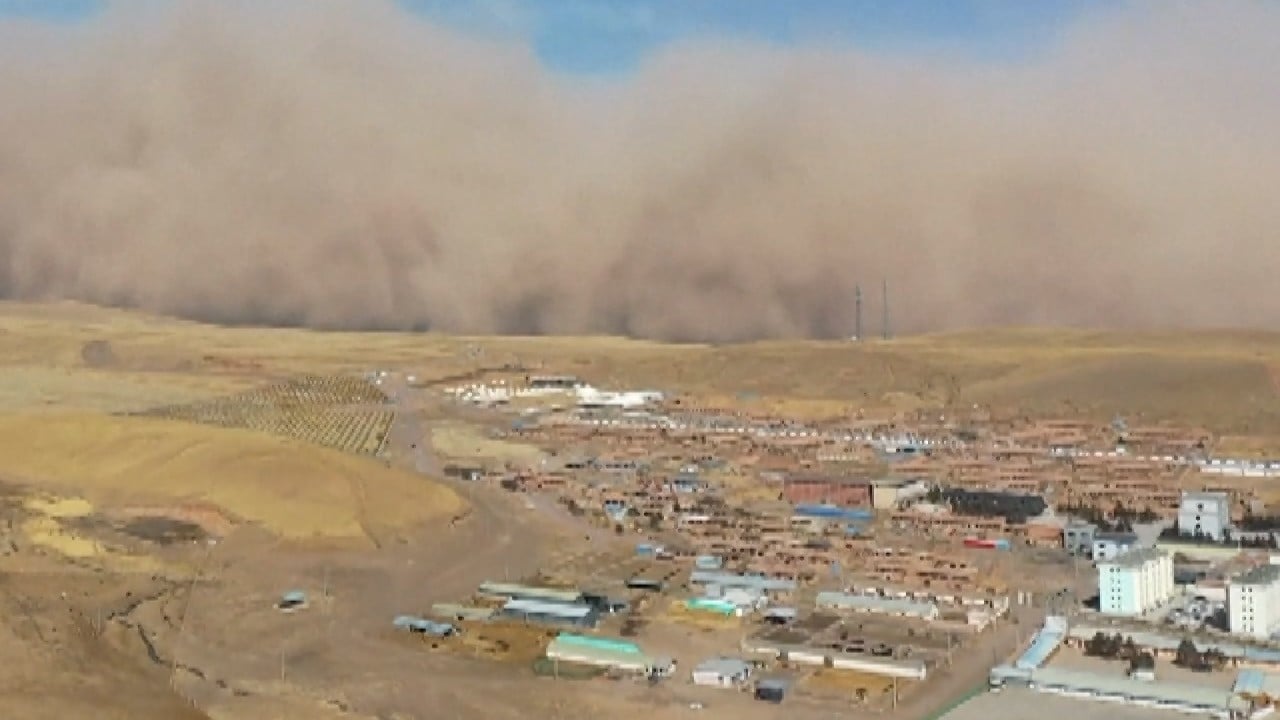At the time, China’s Ministry of Ecology and Environment blamed Mongolia as the main cause of the severe sandstorm.
Ministry officials said Mongolia’s reduced rainfall has not helped vegetation growth, and rising temperatures have melted snow and left large areas of sand exposed. The wind then blew the sand across the border.
But now some Chinese scientists say larger factors may be at play.
Their findings were published Wednesday in Science Bulletin, an academic journal jointly published by the Chinese Academy of Sciences (CAS) and the National Natural Science Foundation of China.
One piece of evidence supporting the scientists’ findings was that Mongolia’s Normalized Vegetation Difference Index, a measure of vegetation cover and vigor, was actually at normal levels last spring.
Scientists’ analysis suggested that strong winds were likely responsible for the above-average number of sandstorms in northern China last year.
To test this, they compared average wind speeds in the first seasons of 2022 and 2023 using data from observatories in cities in northern China. This showed that the numbers for 2023 were “significantly higher” than the previous year.
According to the paper, the average wind speed in northern China showed a decreasing trend from 1973 to 2012, and the number of dusty days also decreased each year during the same period.

Conversely, since 2013, both wind speed and number of dusty days have increased.
“Thus, if wind speeds continue to increase, dust and sand occurrences may become more frequent in northern China,” the scientists said in their paper.
Dust storms require strong winds and a concentration of sand and dust, the latter of which is influenced by factors such as ground vegetation, precipitation, and temperature.
In China, sandstorms usually hit Beijing and surrounding areas in the spring. In such weather, strong winds suck large amounts of sand and dust from the ground into the atmosphere, carrying particles hundreds or even thousands of kilometers away.
With more than 1.7 million square kilometers (656,000 square miles) of desert in northern China and more than 300,000 square kilometers of desert in southern Mongolia, China is one of the countries most affected by sandstorms in the world.
Focus on trade, railways and sandstorms as China pledges closer ties with Mongolia
Focus on trade, railways and sandstorms as China pledges closer ties with Mongolia
However, although decades of investment have made significant progress in reducing the number of sandstorms, in recent years this weather phenomenon has once again become a public concern.
According to the China Meteorological Administration, the average number of dusty days in northern China was only 3.7 in 2013. But then it started to fluctuate and by 2021 it had increased to 7 days.
Despite the new focus on wind speeds, the researchers also stressed that Mongolia’s influence on China’s intensifying dust storms cannot be completely ignored.
“Mongolia’s natural environment has an influence, but it is unclear whether it is the dominant factor,” said a researcher at the CAS Institute of Atmospheric Physics, who requested anonymity.
But he cautioned against blaming Mongolia, adding that ecological and environmental problems should be seen as global issues and should be solved from a global perspective.

